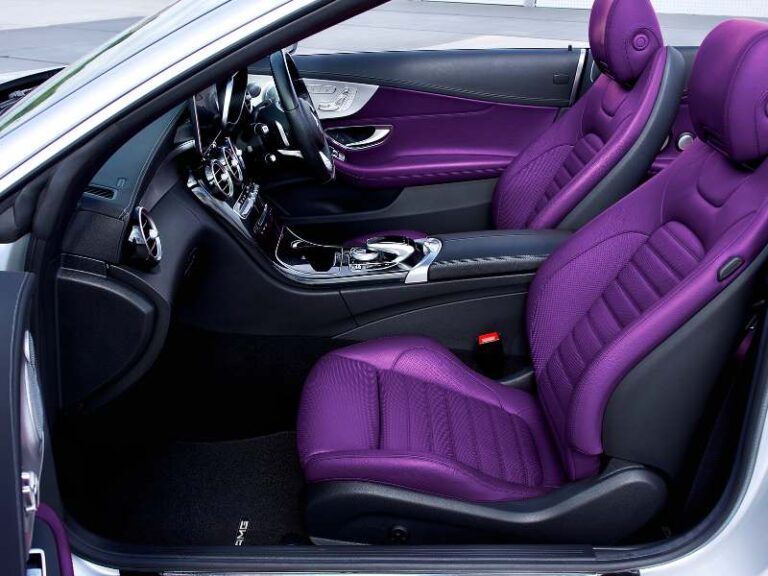What are the Disadvantages of Leatherette?
Leatherette has disadvantages including being less durable and having a lower aesthetic appeal compared to genuine leather. However, it is an affordable and animal-friendly alternative to leather that offers a wide range of colors and patterns.
Leatherette is also easier to clean and maintain, making it suitable for households with children or pets. Additionally, it does not require special conditioning treatments like genuine leather. Despite these advantages, some disadvantages should be considered. Leatherette can be prone to cracking and peeling over time, resulting in a shorter lifespan.
It may also lack the breathability and natural texture of real leather.
Unveiling Leatherette’s Downsides
Although leatherette is often considered a more affordable and versatile alternative to genuine leather, it is not without its drawbacks. A quick comparison with genuine leather reveals several disadvantages of leatherette.
| Disadvantages of Leatherette | Genuine Leather |
|---|---|
| 1. Durability | Usually less durable than genuine leather and may show signs of wear and tear more quickly. |
| 2. Breathability | Lack of breathability can result in discomfort, especially in hot weather, as it may cause sweating. |
| 3. Authenticity | Lacking the natural textures and unique characteristics found in genuine leather. |
| 4. Environmental Impact | Leatherette is typically made from synthetic materials, which contribute to environmental pollution. |
| 5. Longevity | The lifespan of leatherette products tends to be shorter compared to genuine leather. |
While leatherette offers certain advantages, such as affordability and versatility, it is important to be aware of its downsides before making a purchasing decision. Understanding these trade-offs will enable individuals to make an informed choice based on their specific needs and preferences.
Durability Concerns
Leatherette, despite its popularity, comes with a few disadvantages. Durability concerns are among the main drawbacks. While it may resemble real leather, leatherette is more susceptible to wear and tear, affecting its longevity.
Unlike genuine leather, which develops a patina and improves with age, leatherette has a shorter lifespan and is prone to peeling and cracking. This can greatly diminish its aesthetic appeal and overall durability.
Environmental And Health Impact
Leatherette, also known as faux leather or pleather, comes with a set of disadvantages. Its production process involves the use of chemicals that have harmful effects on the environment. These chemicals are often released into the air and water during production, leading to pollution and damage to ecosystems. Unlike genuine leather, leatherette is not biodegradable, meaning it can take hundreds of years to break down in landfills.
The chemicals used in leatherette production also pose potential health hazards. Substances such as PVC (Polyvinyl Chloride) and phthalates are commonly added to make the material soft and flexible. These chemicals have been linked to various health issues, including respiratory problems, skin irritation, and hormonal disruptions. Over time, the constant exposure to these chemicals can have a detrimental impact on human health.
Comfort And Aesthetics Setbacks
Leatherette, despite its popularity as a synthetic alternative to genuine leather, comes with its fair share of disadvantages.
One setback is related to comfort and aesthetics. Unlike genuine leather, leatherette lacks breathability, which can be a problem in various climates, especially hot and humid ones. The material does not allow air to pass through, hindering ventilation and potentially causing discomfort for individuals.
Another issue is the visual and tactile differences from real leather. While leatherette may mimic the look and feel of genuine leather, it often falls short in terms of authenticity. The texture can feel synthetic and may not age as gracefully as real leather. These disparities can affect the overall appeal and durability of leatherette products.
Leatherette’s Maintenance Challenges
Leatherette, also known as faux leather or PVC leather, offers a cost-effective alternative to genuine leather. However, it does come with some disadvantages, particularly in terms of maintenance. Proper cleaning and care are crucial to enhance its longevity and maintain its aesthetic appeal.
One key challenge is the vulnerability of leatherette to stains and heat damage. Although it is more resistant to stains than genuine leather, it is still important to treat spills and stains promptly. Avoid using harsh cleaning agents and instead use a mild soap or detergent solution and a soft cloth to gently clean the affected area.
| Disadvantages of Leatherette | Recommended Cleaning and Care |
|---|---|
| Vulnerability to stains | Treat spills promptly, use mild soap or detergent solution, avoid harsh cleaning agents |
| Heat damage | Avoid placing hot objects directly on leatherette surfaces, use protective padding |
In addition, leatherette can be susceptible to heat damage. It is important to avoid placing hot objects directly on leatherette surfaces, as this can cause discoloration or melting. Always use protective padding or coasters to prevent heat transfer.
By following these cleaning and care specifics, you can minimize the disadvantages of leatherette and ensure its longevity. Remember to regularly dust and vacuum the material to maintain its appearance and keep it looking fresh.
Economic And Ethical Considerations
Leatherette, despite its popularity, comes with its share of disadvantages. From an economic perspective, it can be more expensive than genuine leather, while from an ethical standpoint, it is not a sustainable or environmentally-friendly option.
Leatherette’s Depreciation Over Time
The use of leatherette, a synthetic material, may be seen as economically disadvantageous due to its depreciation over time. Unlike genuine leather, leatherette tends to show signs of wear and tear, such as peeling and cracking, over a shorter period. This means that furniture or items made with leatherette may need to be replaced more frequently, resulting in additional expenses.
From an ethical perspective, choosing synthetic materials like leatherette raises concerns regarding sustainability and environmental impact. The production process of leatherette involves the use of chemicals and petroleum-based materials, which can have detrimental effects on ecosystems and contribute to greenhouse gas emissions.
Furthermore, some people argue that synthetic materials lack the authenticity and craftsmanship associated with genuine leather. There is a growing awareness and demand for products that are sustainably sourced and ethically produced, which may steer consumers away from choosing leatherette.
Discovering Leatherette’s Hidden Downfalls
Leatherette, although popular among consumers, has several under-discussed disadvantages that go unnoticed. One of the major drawbacks is the hidden costs associated with choosing leatherette over genuine leather. While leatherette is initially more affordable, it lacks the durability and longevity offered by real leather. This means that over time, consumers may find themselves needing to replace their leatherette items more frequently, resulting in additional expenses.
Another disadvantage of leatherette is its lack of breathability. Unlike genuine leather, leatherette does not allow air to pass through the material, which can make it uncomfortable to sit or wear for long periods. This lack of breathability can also lead to excessive sweating and increased chances of skin irritation.
Furthermore, leatherette may not be as eco-friendly as it claims to be. The manufacturing process of leatherette involves the use of chemicals and non-biodegradable materials, making it less sustainable than natural leather.
| Disadvantages of Leatherette: | |
| 1. Hidden costs | 5. Lack of breathability |
| 2. Durability and longevity | 6. Increased sweating and skin irritation |
| 3. Need for frequent replacement | 7. Chemical-intensive manufacturing process |
| 4. Lack of sustainability |
While leatherette does have its advantages, it’s important for consumers to consider these under-discussed disadvantages before making a decision. By understanding the potential drawbacks, individuals can make an informed choice based on their personal preferences and needs.
Frequently Asked Questions On What Are The Disadvantages Of Leatherette?
What Are The Disadvantages Of Using Leatherette For Upholstery?
Leatherette, also known as faux leather, has a few disadvantages. Firstly, it is not as durable as genuine leather and can start peeling or cracking over time. Secondly, it is not as breathable, so it can feel hot and sticky in warmer weather.
Lastly, it is not as environmentally friendly as genuine leather, as it is made from synthetic materials.
Is Leatherette Safe For People With Allergies?
Yes, leatherette is considered safe for people with allergies. Unlike genuine leather, which can sometimes trigger allergies due to its natural materials, leatherette is made from synthetic materials that are less likely to cause an allergic reaction. However, it’s always a good idea to test a small area before fully committing to leatherette upholstery.
Does Leatherette Require Special Maintenance?
Leatherette is relatively easy to maintain compared to genuine leather. It can be cleaned with a mild soap and water solution, and it doesn’t require conditioning or special treatments like genuine leather does. However, it is important to avoid using harsh chemicals or abrasive cleaners, as they can damage the surface of the leatherette.
Can Leatherette Be Repaired If Damaged?
While leatherette is more affordable than genuine leather, it can be difficult to repair if it gets damaged. Unlike genuine leather, which can be repaired and restored by professionals, leatherette is not as forgiving. If it tears or gets a deep scratch, it may be more cost-effective to replace the upholstery rather than attempting to repair it.
Conclusion
Leatherette may offer a cheaper alternative to genuine leather, but it does come with its fair share of disadvantages. The material is prone to peeling, cracking, and tearing over time, compromising its durability. Additionally, leatherette lacks the natural breathability of real leather, leading to discomfort in hot weather.
Its synthetic nature can also be a drawback for those seeking a more sustainable and eco-friendly option. When considering furniture or clothing options, it’s important to weigh these disadvantages against the cost savings associated with leatherette. Ultimately, the choice between leatherette and genuine leather will depend on individual preferences and priorities.
- Can I Get in a Taxi Without a Car Seat? - January 26, 2025
- Can I Get Chlamydia From a Toilet Seat? - January 26, 2025
- Can I Get an Uber With a Car Seat? - January 26, 2025






